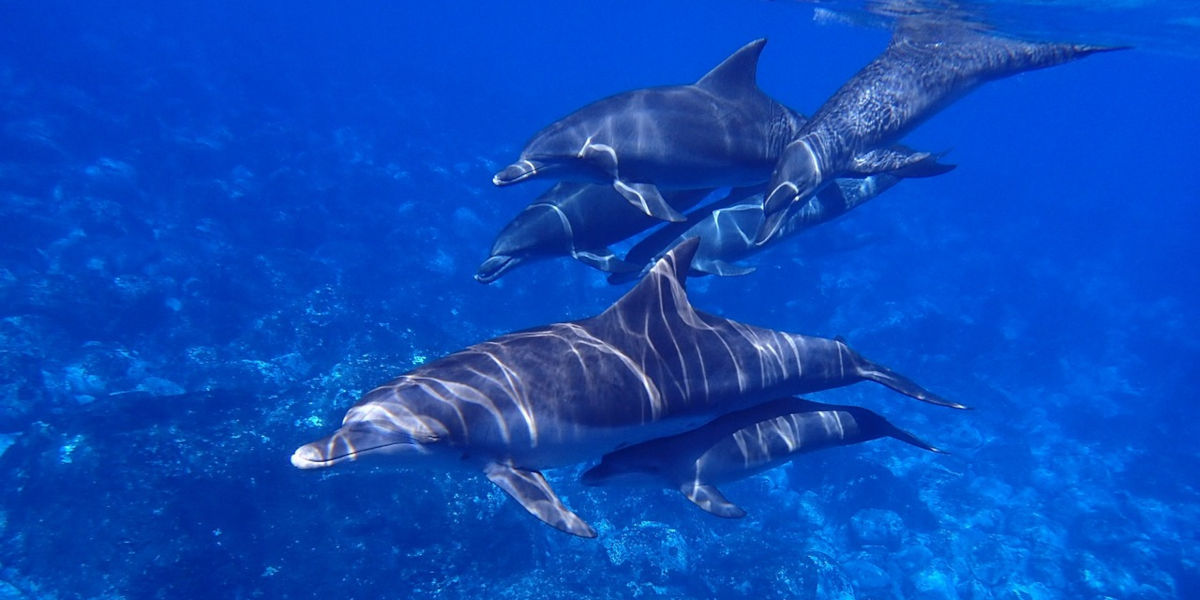Dolphins, those playful, sentient creatures that frolic around oceans worldwide, possess an incredible ability that sets them apart. The intriguing science of dolphin echolocation allows these marine mammals to communicate, navigate their environment, and locate prey with remarkable precision. Fathom the depths of underwater acoustic communication as we explore the questions, how do dolphins use echolocation and what key lessons can humans learn from understanding marine mammal communication.
The Underwater Language: Dolphins and Echolocation
Renowned for their intelligence and social nature, dolphins have captivated scientists and ocean lovers alike. Among their many fascinating traits, their use of echolocation stands out, serving as a crucial tool for survival and communication in the marine world. This method is simple in concept, yet astounding in its execution.
Dolphins emit clicks into their surroundings, then listen for the echo of these sounds. Analyzing the returned echo enables them to construct a virtual map of their environment, identify objects and determine distances. In essence, dolphins 'see' with sound in their underwater habitat.
Understanding Marine Mammal Communication
The diversity and complexity of communications among marine mammals provide a rich field for scientific study. Each species has its unique set of vocalizations, clicks, songs, and whistles to convey information to other members of their group. However, within this wide range of acoustic signals, the science of dolphin echolocation serves as an intriguing standout.
In much the same way as humans use language to convey complex information, dolphins use their sophisticated system of clicks and echoes to communicate and interpret their environment. Understanding this form of communication provides critical insights into dolphins' cognitive abilities, behavior, and ecology. Moreover, it has potential applications for human technology, particularly in fields like sonar and navigation systems.
The Science of Dolphin Echolocation
The science of dolphin echolocation is nothing short of extraordinary. Dolphins produce a series of high frequency, broadband clicks which are projected into the water through their melon, a fat-filled organ in their forehead. These clicks are reflected back as echoes when they meet an object or another animal.
By perceiving and interpreting these echoes, dolphins can determine the size, shape, distance, speed, and even some aspects of the internal structure of the object, demonstrating a remarkable auditory scene analysis. It is through this method that dolphins can successfully hunt for fish in murky or dark waters where vision is of little use.
The Gift of Echolocation
One of nature's marvels is the way dolphins utilize echolocation for navigation and hunting. To comprehend this, we must first understand what echolocation is. Consider the echo you hear when you yell in a cavernous space, like a canyon or a vast cathedral. The sound waves bouncing off the walls are effectively on a round trip: they leave your mouth, travel away until they collide with a surface, and then return to your ears. Dolphins have refined the use of this echo concept into an exceptional biological sonar system, often referred to as echolocation.
Dolphins send out a series of clicks, sweeps, and whistles, which travel as sound waves through the water. Upon hitting an object, these sounds ricochet back to the dolphin. Surprisingly, these aren't interpreted by their ears, but via the fat-filled cavities in their lower jaws, which convey the sound waves to their ears. The reverberating echoes provide a wealth of information about the location, size, shape, and even the interior of the object or creatures they're examining.
How Effective is Echolocation?
Echolocation is wonderfully effective for dolphins. Even in murky waters with low light conditions, they can comprehend their surroundings with pinpoint accuracy, sizing up potential prey or identifying threats. Dolphins are known to have one of the most efficient echolocation systems in the animal kingdom. They can discern a ping-pong ball sized object from over 230 feet away.
The speed of sound under the sea is about four and a half times faster than in the air. This speed, combined with their efficient processing, allows dolphins to react almost immediately to the echoes that return, making their reflexes and hunting agility among the most impressive in nature.
Is Echolocation Exclusive to Dolphins?
Though echolocation has been commonly associated with dolphins, it's not exclusive to them. Other marine mammals such as whales and certain species of bats also exhibit this skill, using it in similar ways to dolphins. Even though the mechanics are roughly the same, each species has its own unique sonic signature, a morphology of sound that is distinct to its kind. In fact, certain species of dolphins, for example, the Atlantic Spotted Dolphin, have been observed to have their unique clicks' pattern, suggesting echolocation is not only a necessary survival tool but also a part of their social identity.
Conclusion
The rich world of underwater communication, especially echolocation, is still a subject of extensive research. Every day, we strive to unravel a little more about the beings that share our planet. As we learn from and marvel at these ingenious survival strategies of the sea, we realize that understanding the oceans is not just about exploration, but also about preservation.




